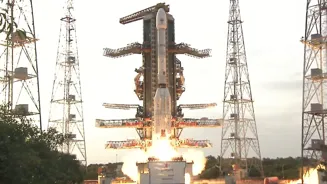Its Super Heavy booster also carried out a controlled splashdown in the Gulf of Mexico, while the Starship itself ended in the Indian Ocean — a step forward after several past test failures that had cast doubt on Elon Musk’s ambition of colonizing Mars.
The 403-foot (123-meter) rocket, the most powerful ever built, launched from Starbase in southern Texas at 6:30 pm local time, according to a live webcast.
Starship is central to Musk’s vision of making humanity a
Splashdown confirmed! Congratulations to the entire SpaceX team on an exciting tenth flight test of Starship! pic.twitter.com/5sbSPBRJBP
— SpaceX (@SpaceX) August 27, 2025
The launch followed two scrubs: a fuel leak on Sunday and bad weather on Monday. The pressure was high, with the last three test flights ending in upper-stage explosions, twice over the Caribbean and once in space. In June, another upper stage blew up during ground testing.
“We’ve had so many tests and it hasn’t proven itself reliable,” Dallas Kasaboski, a space analyst at Analysys Mason, told AFP. “The successes have not
For this mission, the upper stage was designed to fly halfway around the world before splashing down near northwestern Australia. It carried dummy Starlink satellites and prototype heat-shield tiles, flying a path meant to stress-test its rear flaps.
The booster, Super Heavy, landed in the Gulf of Mexico. Unlike earlier attempts to catch it with the launch tower’s “chopstick arms,” SpaceX focused this time on gathering data about engine cutoffs.
Despite the setbacks, analysts
Still, challenges remain. Musk has called developing a reusable orbital heat shield the toughest task. “What we’re trying to achieve here with Starship is to have a heat shield that can be flown immediately,” he said on a webcast Monday.
Another key hurdle is proving Starship can be refueled in orbit with super-cooled propellant, a critical but















